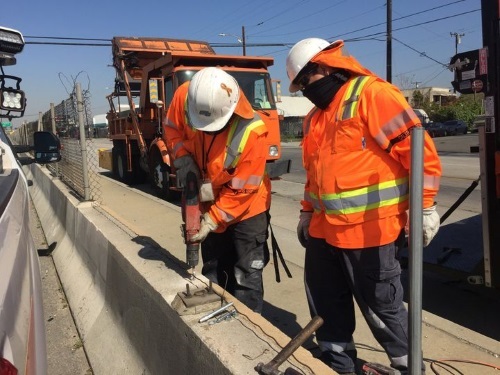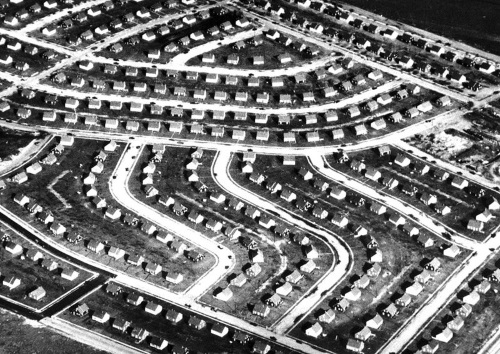FEDERAL ACTION
Coalition Urges Passage of Full FY 2022 Appropriations – AASHTO Journal
AASHTO Provides EV Charging Feedback to FHWA – AASHTO Journal
U.S. Supreme Court agrees to consider limiting wetlands regulation – Reuters
Environmental groups aren’t pushing Supreme Court picks. Here’s why. – Washington Post
The electrical grid of the future must be built around community need – The Hill (Opinion)
USDOT Announces Availability of $1.5 Billion in RAISE Grants Made Possible by President Biden’s Bipartisan Infrastructure Law – USDOT (Media release)
COVID-19
NYC Transit Tech Lab Names COVID-19 Response Challenge Winners – Government Technology
During COVID-19, Road Fatalities Increased and Transit Ridership Dipped – GAO (Blog)
INFRASTRUCTURE RESILIENCE AND SUSTAINABILITY
WYDOT Proposes Reroute Of I-80 To Avoid Winter Closures – Cowboy State Daily
Urban Villages: The Key to Sustainable Community Economic Development – Planetizen
Alaska’s only Arctic deep draft port will get hundreds of millions of dollars from infrastructure bill – KNOM Radio
Massachusetts to install solar noise barrier along highway – PV Magazine
North Carolina Governor: A gas tax in a world that’s turning away from gas isn’t sustainable – Charlotte Observer (commentary)
High-Speed Rail Board Clears Final Environmental Hurdles to Advance Service into Los Angeles – California High-Speed Rail Authority (Media release)
AIR QUALITY
Critics say infrastructure projects won’t make a big enough impact on climate change – NPR
Tech giants call on SCOTUS to let EPA regulate CO2 emissions – The Verge
All-Electric, Zero-Emissions Intercity Bus Makes Its Debut in Santa Barbara County – Santa Barbara Independent
ENVIRONMENTAL JUSTICE
New Jersey Pioneers Transportation Solutions For Mobility-Marginalized Communities – Forbes
How Can A Road Be Racist? Don’t Ask That Question In Michigan. – Deadline Detroit
Improving Transit Options for Underserved Youth in Kansas City – Government Technology
Public transportation in Central NY falls short for people with disabilities – Post-Standard
Fact Sheet: A Year Advancing Environmental Justice – The White House (Media release)
NATURAL RESOURCES
Georgia DOT Expanding Adopt a Highway Partnership – AASHTO Journal
Central Park Is Opening a Lab to Study Climate Change – CityLab
Walton planners, commissioners seek more input from public on tree protection, preservation proposals – Northwest Florida Daily News
Fishermen Discouraged by EPA’s Delayed Timeline to Protect Bristol Bay Salmon Fishery – Alaska Native News
HEALTH AND HUMAN ENVIRONMENT/ACTIVE TRANSPORTATION
WisDOT program aims to improve transportation accessibility – WKBT-TV
5 U.S. Cities Where Bike Commuting Is Booming – CityLab
Wilmington, North Carolina Launches Mobility-As-A-Service Solution – SmartCitiesWorld
Construction begins on Pershing Bikeway – KGTV-TV
County Executive, Office of Transportation Announce Interactive Map Tool for County’s Pedestrian and Bicycle Master Plan – “Walk & Roll Anne Arundel!” – Anne Arundel County (Media release)
TRB RESOURCES/ANNOUNCEMENTS
Preparing for Winter Weather with Transportation Resources – TRB
Highway Capacity Manual 7th Edition – TRB
Advancing the Role of Women in Transportation with Laura Chace, ITS America President and CEO – ITE Talks Transportation (Podcast)
FEDERAL REGISTER NOTICES
Coastal Nonpoint Pollution Control Program: Proposal To Find That Louisiana Has Satisfied All Conditions of Approval Placed on Its Coastal Nonpoint Pollution Control Program – NOAA and EPA (Notice) (Click here for link to correction)
Air Plan Approval; FL; Removal of Motor Vehicle Rules – EPA (Final rule)
Air Plan Approval; New Hampshire; Conformity – EPA (Proposed rule)
Approval and Promulgation of Implementation Plans; New York; Ozone and Particulate Matter Controls Strategies – EPA (Proposed rule)
Visitor Experience Improvements Authority Contracts – National Park Service (Proposed rule)
Pipeline Safety: Informational Webinar Addressing Inspection of Operators’ Plans To Eliminate Hazardous Leaks, Minimize Releases of Methane, and Remediate or Replace Leak-Prone Pipe – Pipeline and Hazardous Materials Safety Administration (Notice)
National Institute of Standards and Technology Standards and Performance Metrics for On-Road Autonomous Vehicles: Workshop – National Institute of Standards and Technology (Notice)
National Advisory Committee on Coal – Department of Energy (Notice of re-establishment)
National Advisory Council – FEMA (Solicitation; request for applicants for appointment to the National Advisory Council)




